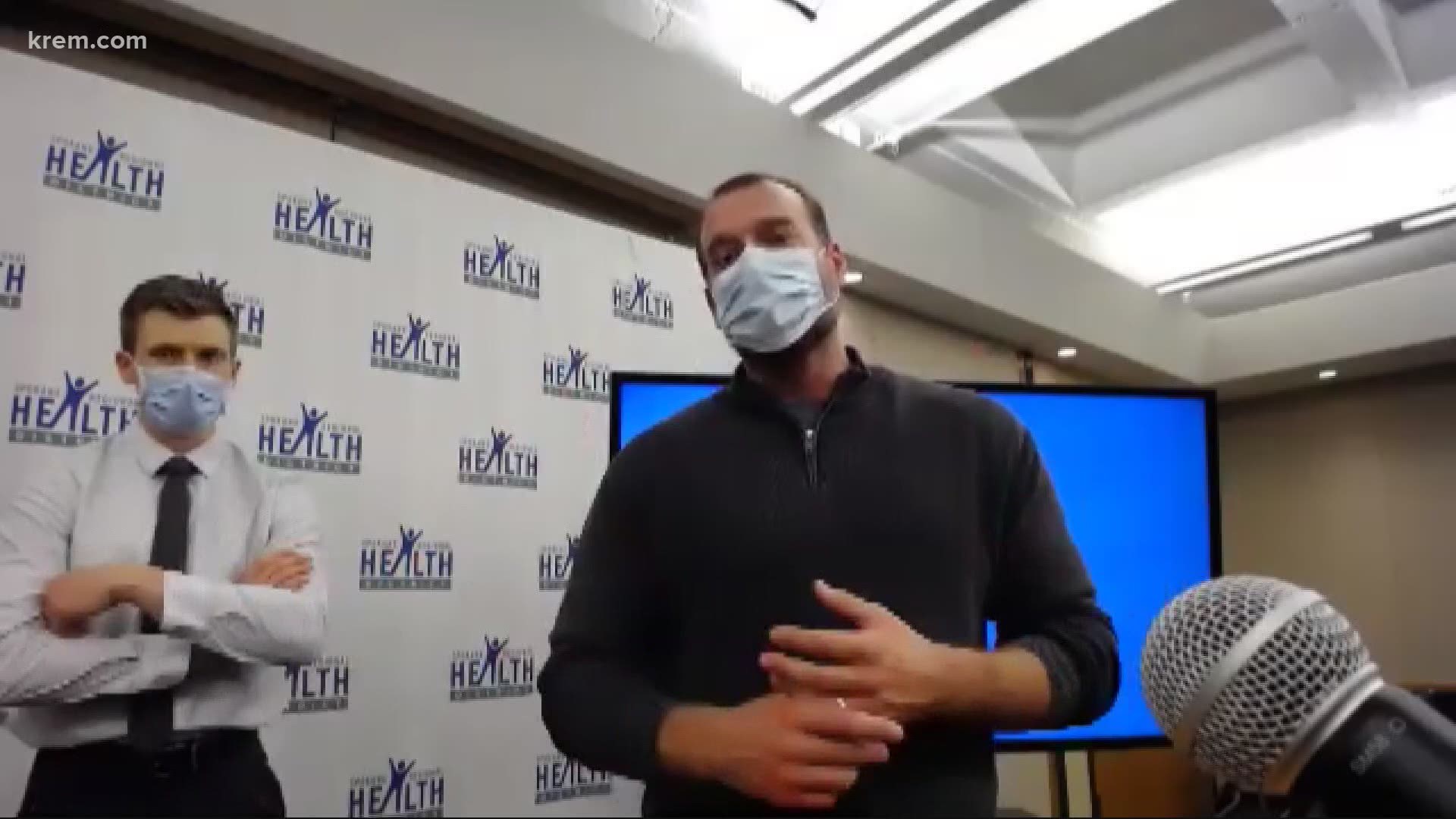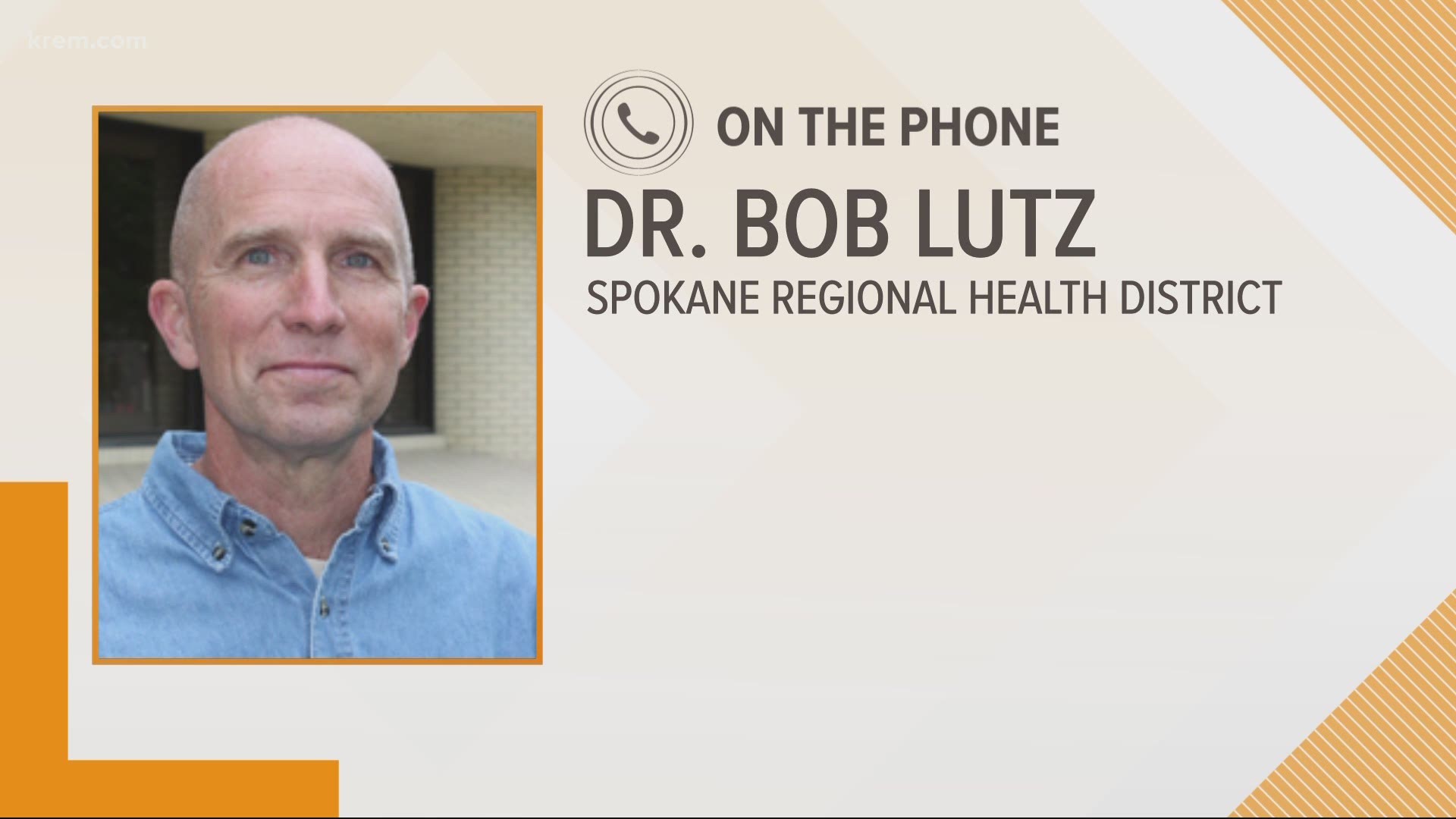SPOKANE, Wash. — As coronavirus cases spike throughout the country, the burden of disease in Spokane County could be much greater than what is known now.
Health officials reported on Wednesday morning that 1,416 people have been diagnosed with coronavirus in Spokane County since the pandemic began.
But there are likely 10 to 12 people who have had coronavirus but aren't diagnosed for every positive case, said Providence Health Care's chief medical officer Dr. Dan Getz. Many of those people may be asymptomatic.
That makes for 14,160 to 16,992 people in Spokane County.
Thirty-nine people have died since the pandemic began, including one person in their 30s. Health officials said on Wednesday that 34 people are hospitalized, with 19 of those being Spokane County residents.
The incidence rate of coronavirus in the county has tripled over the past few weeks — and health officials say they have "great concerns" as people head into the Fourth of July holiday weekend.
Leaders from Providence and MultiCare, and Spokane County Health Officer Dr. Bob Lutz, answered a handful of questions on Wednesday from KREM reporters and others about coronavirus in Spokane County. Here are their answers.
Do local hospitals still have capacity — and when could they run out?
Dr. Getz with Providence said the system still has hospital capacity at its facilities.
However, health officials do anticipate that COVID-19 hospitalizations will double in Spokane County over the next two weeks as cases continue to climb.
If current predictions hold true, Spokane County's incidence rate could reach that of Snohomish County, where hospital systems were overwhelmed, Getz said. But he was unable to provide a time frame for when that could happen.
“As this uptick in cases leads to more hospitalizations, the demands that COVID patients place on our systems will begin encroaching on our ability to care for other patients," said Dr. Ben Arthurs, a pulmonoligst and intensivist with MultiCare.
How many beds are available at local hospitals?
There are 900 beds between Holy Family and Sacred Heart hospitals in Spokane, Getz said. This includes 54 beds in the intensive care unit at Sacred Heart, along with the hospital's Special Pathogens Unit.
Arthurs was not able to answer this question for MultiCare hospitals.
But Getz and Arthurs say the problem lies in staff to care for patients rather than beds.
“We’re already starting to look at getting travelers to come into our community to help staff up," Getz said, adding that Spokane could reach a time like that of Yakima County where hospital capacity is overwhelmed.
“We have a lot of capacity to expand our ICU beds," Arthurs added. "I think, again, that bottleneck is our personnel."
While surge capacity is available right now, there could be problems if cases continue to drastically increase.
“If disease rates keep on doubling, we can’t keep on doubling our capacity," Getz said.
What is the situation in intensive care units?
MultiCare has seen a "major uptick" in cases of critical illness over the last several weeks, Arthurs said.
He added that some patients are saying they experienced symptoms up to two weeks before landing in the ICU. This means there can also be a lag time between illness and critical illness, along with a lag in the spread of the disease itself.
“It’s also very emotionally taxing for our staff, particularly the bedside nurses that are there with them [patients] 24 hours a day," Arthurs said.
Nurses in Yakima County are showing major signs of burnout, Arthurs said, and hospital systems in Spokane County are trying to avoid that outcome.
Arthurs also expanded on the symptoms of ICU patients. Most have respiratory failure, he said, but almost all of the people who are critically ill also have other organ system failures.
He also noted that there are elements of brain dysfunction, especially in ventilated patients who are on sedatives.
Most patients stay in the ICU for two to three weeks, with many surviving and going to the hospital floor, Arthurs said. But the recovery phase is often one to two times as long as the time a patient spent in the ICU.
Not all patients in the ICU have underlying health conditions, Arthurs said. He has also seen several patients under the age of 50 and some pregnant patients.
What does the curve look like in Spokane?
“We unfortunately are on the ascending portion of that curve," Lutz said of Spokane County on Wednesday.
“The reality is that things that you do today, the behavior changes that we get people to follow through with today, are going to start to effect change in a couple of weeks," he added.
All of the doctors who spoke on Wednesday urged people to wear face coverings. If 80% of people followed the statewide directive to mask up in public when they cannot physically distance, Spokane County would see a decrease in cases in several weeks, Lutz said.
What is the median age of people infected with COVID-19?
The median age of people diagnosed with coronavirus is sitting at 31 years old in Spokane County compared to 54 years old just several weeks ago.
“We truly have community spread. We truly have an outbreak that is not being contained at this point," Lutz said on Wednesday.
For the week of June 22, 77.3% of cases had epidemiological links, according to data from the Spokane Regional Health District. Currently, 41.2% of reported cases for the week of June 30 have epidemiological links, and the trend line on Spokane County's graph continues downward.
The data is forecasting that an increasing number of cases will come from community spread.
RELATED: Increasing number of COVID-19 cases in Spokane County from community spread: What we know today
Could Spokane County move backward into Phase 1?
The short answer: We don't know.
Benton and Franklin Counties, which have seen an uptick in COVID-19 cases, have discussed the possibility of moving backward into Phase 1, Lutz said.
He added that there are conversations about this happening with Gov. Jay Inslee and the state Department of Health.
"It really needs to be a collective effort to keep us from moving back," Lutz said.
“Going into the July Fourth holiday, I think everyone at the state level – certainly everyone at the local level – is worried about our increasing case counts," he added.


